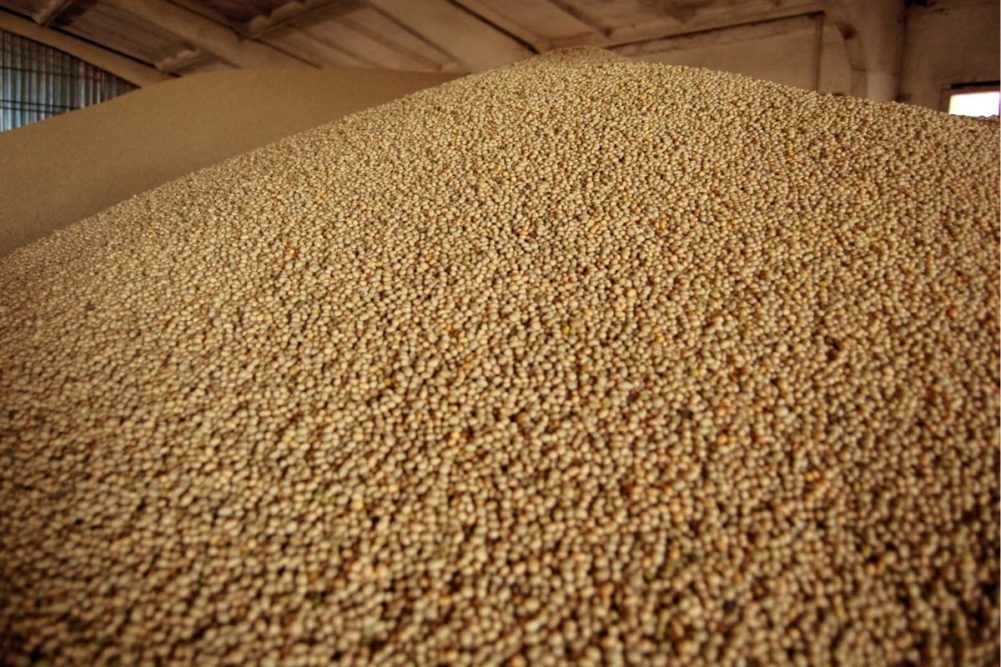KANSAS CITY, MISSOURI, US – Oilseed prices came off record highs as 2021 neared its close, with the primary short-term driver being the market’s concern over the spread of the Omicron variant of COVID-19, with signs that demand is slowing in foodservice outlets and governments in some countries reimposing lockdown conditions.
The United Nations Food and Agriculture Organization (FAO) said in its Food Price Index of Dec. 2 that global vegetable oil prices had fallen by 0.2% in November, from the record high registered the previous month.
“The slight decrease reflected somewhat lower values for soy and rapeseed oils, while quotations for palm oil remained virtually unchanged,” the FAO said. “International palm oil prices maintained their firmness in November, with the downward pressure linked to rising concerns over the impact of a resurgence in COVID-19 cases largely offset by the support stemming from the anticipation of production slowdowns in major producing countries.
“As for soy and rapeseed oils, world prices retreated moderately, broadly softened by demand rationing. Meanwhile, lower crude oil values also weighed on vegetable oil prices.”
In its Nov. 18 Grain Market Report, the International Grains Council (IGC) said its index for soybean prices was little changed month on month, “with pressure from prospects for heavy supplies and softer soya oil values offset by support from an uptick in export demand.”
“Chicago soybean spot futures were moderately higher in two-sided activity,” the IGC said. “Through mid-November, the market was pressed lower by outlooks for a record global outturn, reflective of a sizeable US crop, together with a swift planting campaign in Brazil amid mostly favorable conditions.
“A sizeable drop in soya oil values also weighed, as did movements in outside markets at times. More recently, however, values were underpinned by an uptick in international sales, including to China as processing margins there improved. However, with Gulf basis levels dropping month-on-month, US export quotations decreased by 1%, to $504 fob.”
While being thinly quoted, spot export prices in Brazil (Paranagua) fell by 2%, to $516 fob, as sentiment was weighed by rapid planting progress, the IGC said.
“With a potentially record crop on the horizon, premiums headed lower, also linked to reports that producers were selling old crop stocks to free up space for fresh supplies,” the Council said. “In Argentina, where the market was considered nominal, nearby prices were modestly firmer month on month, at $556 fob Up River, with downside likely limited by a relatively tighter fundamental backdrop despite pressure from currency movements.”
Regarding rapeseed, the IGC reported that reflecting supportive fundamentals, ICE canola futures in Canada posted a net gain of 6% month on month, albeit with advances partly capped by weakness in soybeans and vegetable oils at times. Nominal export quotations jumped by $42, to $869 fob Vancouver.
“In contrast, Euronext rapeseed futures in the EU declined by just under 1% month on month, pressured by new crop arrivals, prospects for larger 2022-23 winter plantings and weakness in other oilseeds and products markets at times,” the IGC said. “Canola export prices in Australia declined by $36, to $742 fob (Kwinana), pressured by new crop arrivals, with both wheat and canola being prioritized for export.”
A Dec. 16 report from ADM Agriculture in the United Kingdom, authored by Will Ringrose, the company’s head of Oilseeds, noted that soybean prices at the CBOT had been “strongly supported by a rally in soy meal, which was supported by reports of low meal yields and tight supplies just as usage is starting to ramp up.”
“South American weather showed showers this week before turning dry with little rain in the two-week forecast,” Ringrose said. “Weather will be closely watched as we head into 2022.”






